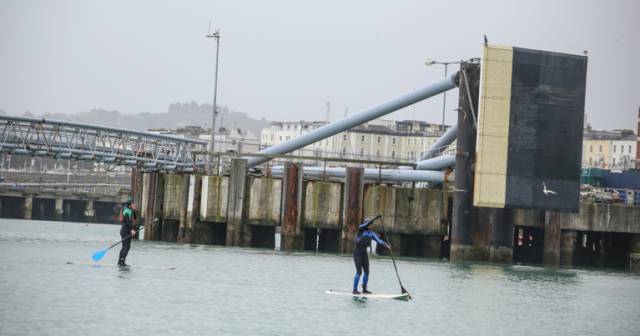Is a new ferry route coming to Dun Laoghaire Harbour? After an absence of three years or more there is more than the usual level of a rumour circulating at the south Dublin Port that a regular passenger service could be coming back after the recent break in what – until 2015 – was a continuous 200–year service from Dun Laoghaire.
Insiders say that they are 'very confident' a ferry service can be reintroduced but for now, the new harbour owners, Dun Laoghaire Rathdown County Council, are tight-lipped in a statement to Afloat.ie about any plans concerning a ferry or its proposed routing.
As regular Afloat.ie readers will know, Dun Laoghaire Harbour Company was dissolved on the 3rd October 2018 and transferred to Dún Laoghaire-Rathdown County Council under the Harbour Act, 2015.
An Afloat.ie source told Afloat.ie last week a new ferry deal is 'in discussion' but, unfortunately, no other details are forthcoming.
A shipping industry told Afloat.ie the only viable ferry berth now available in the harbour would be Berth Number Four that has a linkspan to accommodate small ships. This is the berth adjacent to St. Michael's Wharf, at the old ferry terminal, next door to the Royal St. George Yacht Club.
The 200-year-old Harbour and its tenants are now in a period of transition and have to address a number of issues not least the state of repair of the harbour and also the financial standing of the Company. Final accounts must be presented to the Minister for Housing, Planning and Local Government and laid before the Oireachtas. This must be completed within six months from the 3rd October 2018.
The Council met last week with harbour tenants and explained to them that it is applying for European Regional Development Fund (ERDF). The hope is that the Council, the second biggest in the country, can bring some financial muscle to bear to restore the Victorian structure that suffered so badly in storms last March.
Stakeholder engagement between Dún Laoghaire #harbour users and the #dlrcc council this morning. Really useful for everyone. Great opportunity for everyone to connect. pic.twitter.com/61bvjisP7J
— dlrcc (@dlrcc) November 16, 2018
In a statement, Dún Laoghaire-Rathdown County Council told Afloat.ie that 'All proposed projects, including any potential ferry service, are being reviewed against this background'.
































































